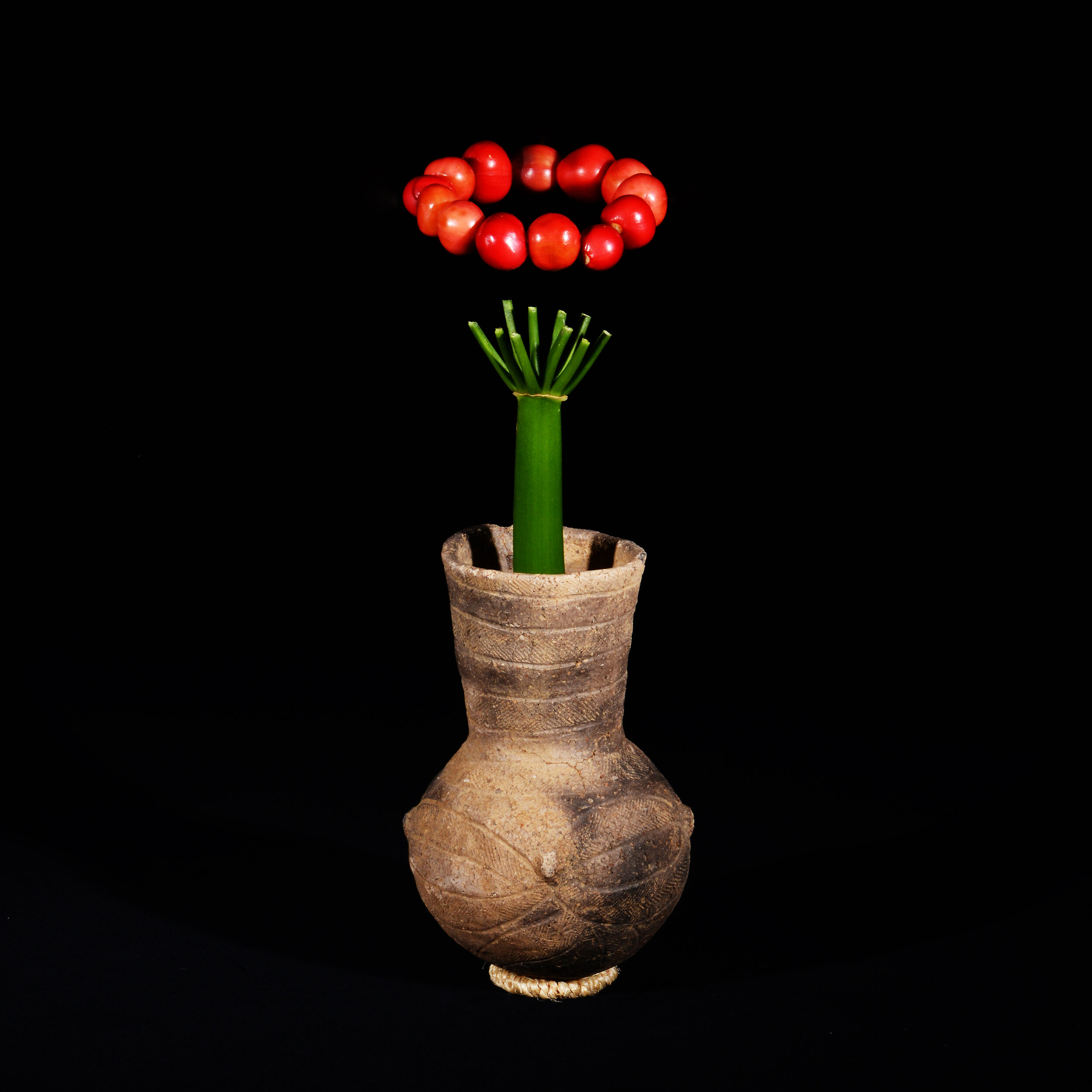Discover the beauty of Japanese antiques through a modern eye
Antique container from Inoue Oriental Art Nihonbashi. Flower arrangement by Norihiko Kamei.
Meet Shugo Inoue who is running the Inoue Oriental Art Nihonbashi in the heart of Tokyo. This dealer of Asian art has a truly unconventional approach to antiques and is never short of surprises. A third generation of the renowned Japanese art dealer family, he continues to pass on his knowledge and encourages young people to collect. In our interview he shares his vision on the future of living with art.
In the antique world you are considered a very young art dealer - what made you continue your family tradition?
The reason is very simple – I truly love art. But a lot of what I have achieved is due to luck. For an art dealer here in Japan it is very common to have a master who teaches you and helps you establish your practice. Knowledge is being passed from generation to generation. I was really lucky to receive an incredible mentorship of not one but two very special masters. I’ve learned a lot from these antique dealers. They were great teachers and generously shared their philosophy, skills and knowledge with me.
As with most traditional things - young people tend to think that antiques belong to museums and can be a little old fashioned. How do you capture a new collector’s eye?
It is challenging but I believe that if you add an element of entertainment to anything it can facilitate the process. The experience of learning about antiques must not be boring – that is my principle; on the contrary it should be exciting. I love sharing the knowledge that can enrich and inspire my clients. The educational aspect presented in an entertaining way is really important to me. I learned from my masters to start with showing the best pieces I have at the gallery. Even if my clients don't know anything about antiques yet, I like to train their eye with true masterpieces.
We really loved your catalogue ‘Antique is magic’ where you invited artist Kamei Norihiko to do Ikebana (the Japanese flower arrangements) in antique vessels opposing the modern vs. old; the surreal vs. historical. How did you come up with this unconventional idea? What feedback did you receive from the collectors and public?
I’m very glad to hear you liked it. In everything I do my moto is “learn from yesterday, adapt for tomorrow”.
The relationship between flowers and art has a very long history and I wanted to elaborate on this. For my antique containers I aimed to find the perfect avant-garde flowers. Kamei san is an old friend of mine, we went to the same university. His flower installations are full of elegance but also very contemporary and edgy – a mix polished to perfection.
I work with Kamei Norihiko a lot. He redesigned our gallery logo and created a special catalogue for the exhibition, in his signature style. For this project we really tried to challenge ourselves and present antiques in a contemporary way. I really hope young people were able to enjoy ‘Antique is magic’ exhibition because of this unconventional approach.
What attracts you most in Ikebana as an art form?
My master in Kyoto taught me something I will never forget: “Present something good for someone. It must be beautiful. However, it must be achieved within various constraints.” This concept reminds me of Ikebana philosophy but also finds its reflection in the principles of dealership and collecting.
You encourage to use antiques i.e. vases, bowls, cups in everyday life. Why? Are they not too precious for daily use?
I know this might sound rather unusual for anyone with the Western experience of collecting antiques. My approach is very much inspired by the traditional Japanese tea ceremony culture, Sado 茶道 (the way of tea). The words are very simple but very deep in meaning: ‘’Use correctly and keep eternally.”
In the case of antiques you cannot understand an object only by visually appreciating it. It is important to learn how to use it properly and live with it freely. This sense of Japanese aesthetics nurtured for centuries has been passed down through generations. We are so lucky to have access to this wisdom today.
Find out more about Inoue Oriental Art Nihonbashi here







